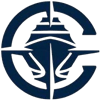The PGA Tour season is upon us and as you pick your teams and lineups for the fall events, there are some important stat categories to look at as you make your selections.
A couple quick primers:
1. There's a big unknown with the Web.com Tour graduates. The Web.com Tour doesn't have ShotLink, and in general, those courses are easier than the ones on the PGA Tour. Additionally, many of those players will be seeing PGA Tour venues for the first time. We won't touch on any Web.com Tour players here, but if you use stats to pick them, just realize that seeing a golf course for the first time on the world's biggest stage is not easy. There's a reason why so few rookies win every year on the PGA Tour - the learning curve can be steep.
2. While the PGA Championship finally adopted ShotLink last year, the other three majors still have not. That means that the strokes gained stats below do not include the first three majors. So for someone like Jason Day or Adam Scott, who always seem to be in contention on the back nine on Sunday at Augusta, the mastery of those greens are not reflected in strokes gained-putting, for example.
Strokes Gained-Putting Got a Friend in 2014
Last year I wrote that strokes gained-putting was the best putting stat available. It still is. I also wrote that you needed to do some homework because some of the best putters don't always translate
The PGA Tour season is upon us and as you pick your teams and lineups for the fall events, there are some important stat categories to look at as you make your selections.
A couple quick primers:
1. There's a big unknown with the Web.com Tour graduates. The Web.com Tour doesn't have ShotLink, and in general, those courses are easier than the ones on the PGA Tour. Additionally, many of those players will be seeing PGA Tour venues for the first time. We won't touch on any Web.com Tour players here, but if you use stats to pick them, just realize that seeing a golf course for the first time on the world's biggest stage is not easy. There's a reason why so few rookies win every year on the PGA Tour - the learning curve can be steep.
2. While the PGA Championship finally adopted ShotLink last year, the other three majors still have not. That means that the strokes gained stats below do not include the first three majors. So for someone like Jason Day or Adam Scott, who always seem to be in contention on the back nine on Sunday at Augusta, the mastery of those greens are not reflected in strokes gained-putting, for example.
Strokes Gained-Putting Got a Friend in 2014
Last year I wrote that strokes gained-putting was the best putting stat available. It still is. I also wrote that you needed to do some homework because some of the best putters don't always translate into tournament winners.
Well, in 2014 two other strokes-gained categories arrived: strokes gained-tee to green and strokes gained-total. In essence, if the scoring average for the field for a particular round was 70 and the player shot 66, they gained four shots on the field. That's known as their strokes gained-total. Furthermore, if a player's strokes gained-putting is 1, then his strokes gained-tee to green is 3 for that round.
How does this apply in the real-world?
The second best putter, statistically, on the PGA Tour last season was Aaron Baddeley. His tournament finishes: zero wins, zero seconds, zero thirds, two top-10s and a 114th-place finish in the FedEx Cup. The problem? He ranked 170th (of 177 who qualified) in strokes gained-tee to green.
In fact, of the top-10 putters on the PGA Tour last season, only Matt Every and Brendon Todd won events.
Conversely, here's the top-10 finishers in strokes gained-total last season: Rory McIlroy, Sergio Garcia, Jim Furyk, Matt Kuchar, Adam Scott, Bubba Watson, Justin Rose, Dustin Johnson, Charl Schwartzel and Graeme McDowell. Six of those 10 won events.
Other Stats to Watch
Shotlink gives a player, coach, broadcaster and fan every stat they could ever want, but all have some flaws. Scrambling is a wonderful stat in theory, except so few PGA Tour events have thick rough. So proximity to the hole from sand is probably a better stat to get a feel for a player's short game under fire.
Other stats of interest include the all-around ranking, greens in regulation, average approach distance from 125 yards and in (ripped straight from every cliche you've ever heard about the scoring distances) and - if it's a week like Hilton Head, which has notoriously tight driving canopies - total driving, which is the combination of distance and accuracy and proximity to the hole from rough.
But look at strokes gained-tee to green, strokes gained-putting and strokes gained-total. The stat is meant to take into account all aspects of a player's game, and in 2013-2014 the stat rang true.



































